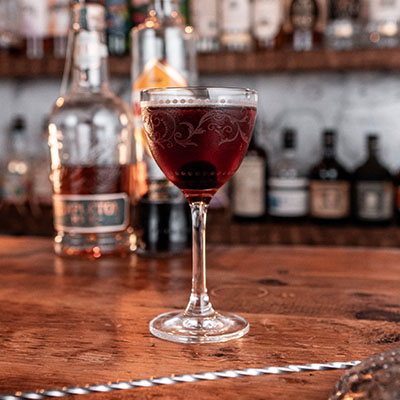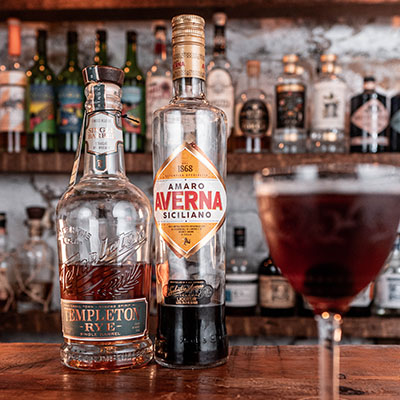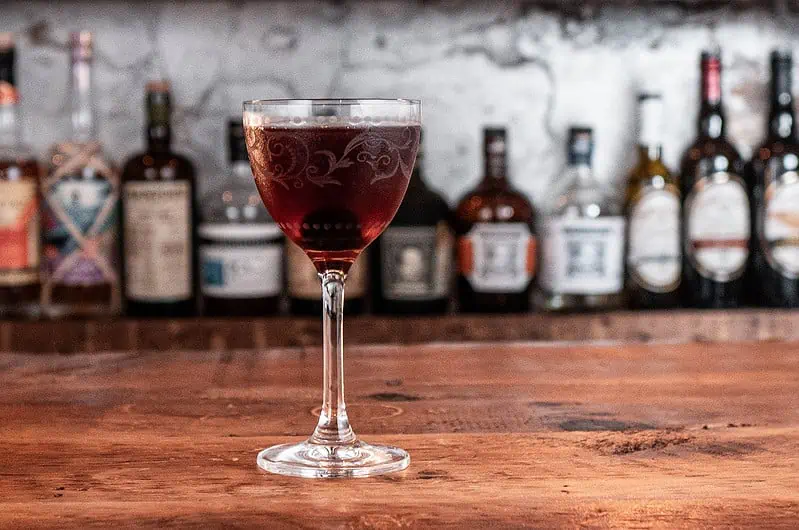The Black Manhattan is a modern twist on the classic Manhattan cocktail, which has its roots in the late 19th century. The Black Manhattan replaces the traditional sweet vermouth with a bitter liqueur called Averna, resulting in a darker and more robust flavor profile.
While the exact origin of the Black Manhattan is not well-documented, its emergence can be attributed to the evolution of cocktail culture and experimentation by bartenders.

The original Manhattan cocktail is believed to have been created in the 1870s or 1880s, likely in New York City. It was named after the borough of Manhattan, a hub of activity and innovation during the cocktail’s formative years.
The classic Manhattan recipe typically includes rye whiskey, sweet vermouth, and Angostura bitters, stirred together and garnished with a cherry.
Black Manhattan Recipe
Unlock the Language of Cocktails with the Bartender’s Alphabet!
Ready to crack the cocktail code? Unlock the language of cocktails with the Bartender’s Alphabet! Gain insider knowledge and understand the terminology used by bartenders. As a bonus, receive five exclusive recipes from award-winning mixologist Carl Busch. Raise your cocktail game to new heights!
We will keep your data private and only send you essential emails from Carl.
When Did the Black Manhattan Become Popular?
The Black Manhattan gained popularity in the early 2000s as part of the resurgence of craft cocktails and the revival of classic recipes.
The recipe was created by Todd Smith in 2015 when he was bartending at San Francisco’s Bourbon & Branch.
The substitution of Averna, an Italian amaro known for its bitter and herbal flavors, adds complexity and depth to the cocktail. Averna’s dark color is what gives the Black Manhattan its name.
The drink has since become a favorite among mixologists and cocktail enthusiasts, offering a unique twist on the traditional Manhattan.
The Black Manhattan, while a relatively recent addition to the cocktail canon, has quickly become a beloved variation that showcases the ongoing creativity and innovation within the world of mixology.
Riffs of a Black Manhattan Recipe
Variations of the Black Manhattan may feature different types of whiskey, such as bourbon or even smoky Scotch, and the addition of other ingredients like
What is the Difference Between a Black Manhattan and a Manhattan?
Each cocktail uses rye whiskey as the base spirit and a 2:1 ratio. The Black Manhattan uses Averna Amaro, and the Manhattan uses sweet vermouth.
What Whiskey is Good for a Black Manhattan?
I like to use 100-proof or higher rye whiskey. It gives the cocktail a little more balance with the bold flavors of the Averna amaro.
Try as many as you can and see what you end up liking.
What Amaro should be used in a Black Manhattan recipe?
Todd Smith, the creator of the Black Manhattan recipe, specifically uses Averna instead of sweet vermouth. Technically, you have a different cocktail if you use a different type of Amaro.
What is Amaro Averna?
Amaro Averna is a popular Italian amaro that has been produced since 1868. It is known for its rich and complex flavor profile, balanced with bitter and sweet notes.

Averna is classified as an amaro, a category of Italian, bitter, herbal liqueur traditionally consumed as digestifs.

